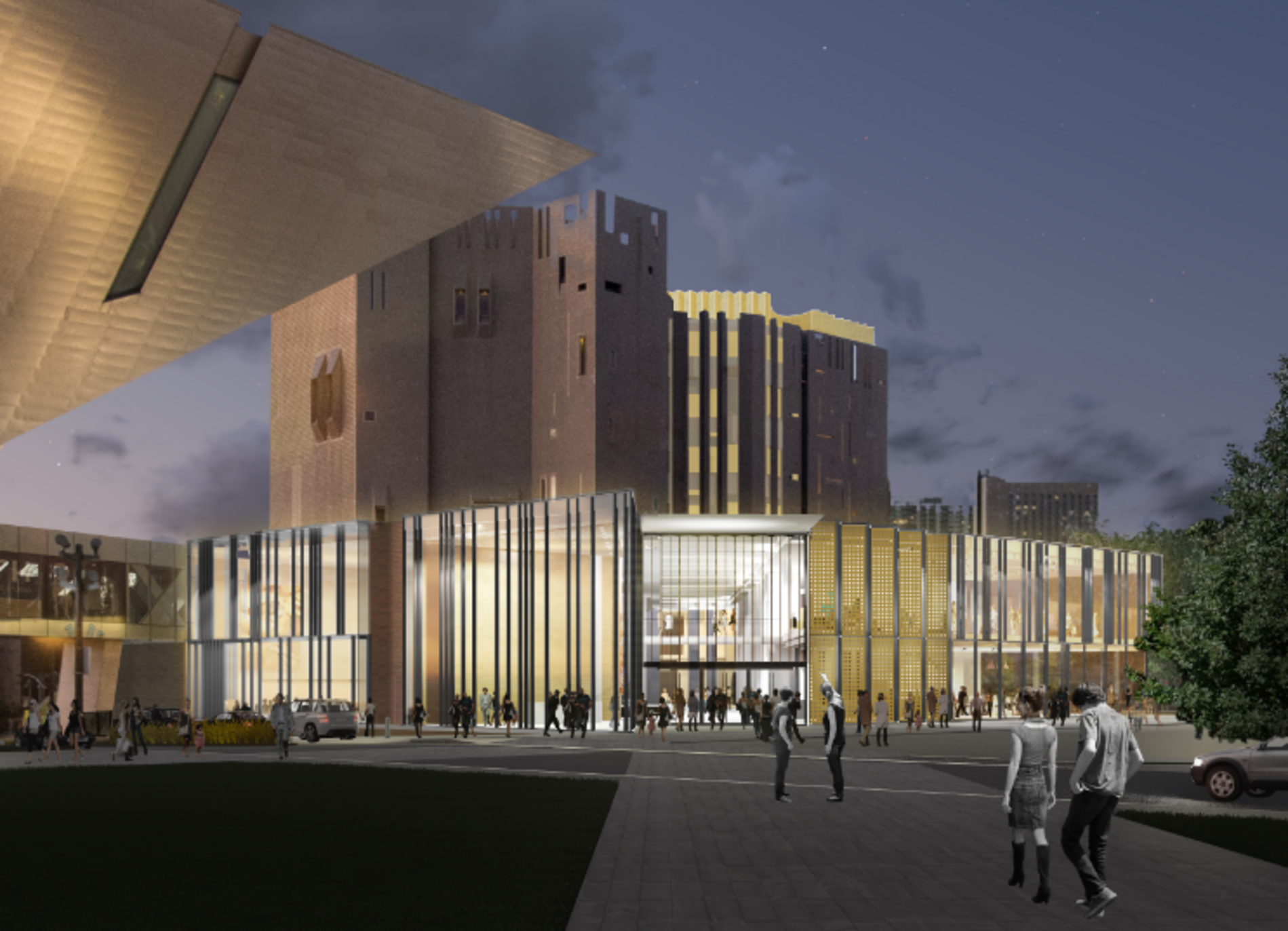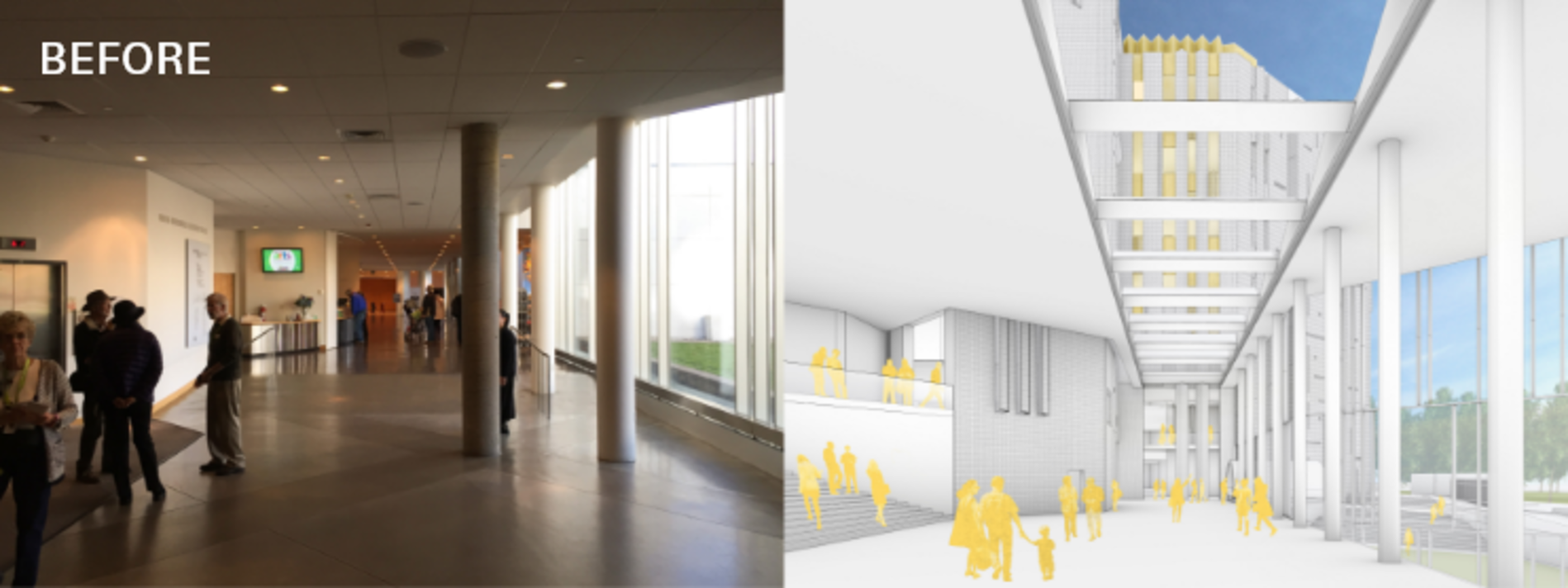
Over the course of its 75-year history, the Denver Art Museum has navigated the evolution and growth of changing ideas about its beloved collections, sense of place, patron requirements, message of learning, and how best to present and exchange information. The museum’s collections, buildings, and unwavering mission to “enrich the lives of present and future generations” exemplify a long trajectory of pushing boundaries that have culminated in the creation of a world-class museum.

The physical manifestation of DAM’s achievements is embodied in its two architectural icons: The Ponti Building by Italian modernist Gio Ponti and the Frederick C. Hamilton Building by Daniel Libeskind. When the Ponti Building opened in 1971 and the Hamilton Building in 2006, each challenged us to think differently about how art is presented and viewed. Each transformed the museum and its reputation and, in combination with the two museum plazas, the parking complex, the museum’s administration building, and the Michael Graves designed Denver Public Library, established an eclectic —if somewhat disjointed—cultural campus.
In recent years, it became evident that DAM’s present function and its future responsibility as a cultural institution required thoughtful, comprehensive re-consideration. The buildings, especially the Ponti Building, required restoration and upgrading with an approach that balanced respect and stewardship of the past with vision and relevance for the future. The museum directors and trustees saw the need to strengthen ties to the communities surrounding the museum and Denver’s historic Civic Center while further unifying the campus. To address the complexity of these considerations and develop a long-term vision for the site the museum initiated and engaged in a master planning process led by Tryba Architects.

Principle-Driven Master Plan
Tryba partnered with the museum to conceive an innovative principle-driven plan to re-invigorate the fifty-year-old Ponti Building, and to enhance its relationship to the Civic Center, cultural campus, and the surrounding city. The Master Plan emerged from foundational, overlapping principles: Stewardship; Visitor Experience; Access and Inclusivity; and Connectivity. These principles created the conceptual framework for a series of projects conceived to realign the physical conditions of the campus with its mission and values.
Each project was clearly articulated in response to the fundamental urban opportunities of this important site at the heart of the Civic Center. The reprogramming of the entire complex required a new response to the unique opportunities for visitor arrival and entry to the museum, a reimagining of the visitor experience circulating through the primary structures and exhibitions requiring a new response to the building enclosure. The principles and vision of the Master Plan facilitated assessment of project priorities and value and provided the basis of the museum’s successful $150 million capital campaign.
Stewardship
The foundation of the Master Plan was grounded in the responsibility of stewardship of Ponti’s beloved fifty-year-old icon and included restoration of its innovative exterior envelope and replacement and upgrade of obsolete building and life safety systems. Enhanced building performance and careful reconsideration of the service strategy, gallery configuration and materials were critical to the continued relevance of the building, and the ability to protect and display the museum collections while attracting new larger traveling exhibits.
Deep study and reflection of DAM’s history and legacy brought the future potential of the Ponti Building into clear focus. Unrealized components in Ponti’s design provided clues to his original desire to further enhance and activate the immediate surroundings while connecting more fully to the landscape of the West. Projects in the new Master Plan more fully articulated the path toward the realization of these latent concepts including an expanded network of active gardens and terraces surrounding the building and a crowning new rooftop pavilion establishing a connection to the city, the sky and the Rocky Mountains beyond.
Visitor Experience
The Ponti Building was an acknowledged forerunner in a movement to transform the museum from a temple-style container to a more accessible institution centered on viewer choice and access to collections. The radical concept of paired high-rise towers with small floor plates was based on the idea that stacking the galleries and eliminating long hallways offered the best viewer experience and promoted choice. Ponti’s idea of effortless vertical circulation was limited by the technology of his day. The Master Plan prescribed the addition of new elevators and revised visitor flow to make movement through the building—both vertically and horizontally—more legible, open and elegant.
The hierarchy and clarity of entrances had become ambiguous as the museum’s campus grew over time. The Master Plan rebalanced the campus, establishing a strong sense of arrival and legible visual axes linking the buildings. The new Welcome Center was planned to integrate visitor services, event spaces, retail space reflecting DAM’s educational mission, and a café and restaurant connected to a new landscaped courtyard. Luminous and glowing at night, the Welcome Center was envisioned as a highly integrated and welcoming lantern to the Civic Center neighborhood.
